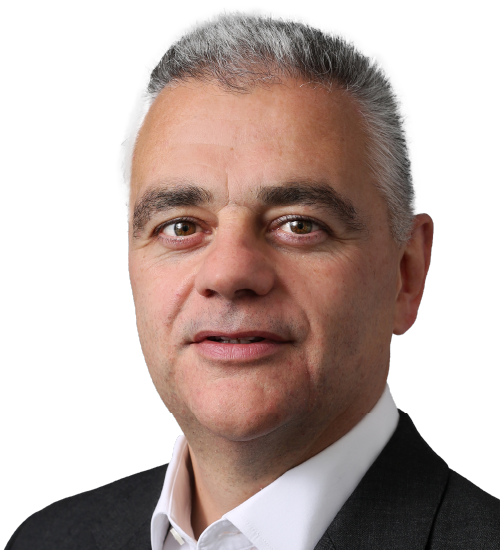Investment conditions

Growth (economic)
Economies remain resilient but the strong growth momentum we saw at the start of the year has faded. The strongly positive impulse from China reopening has diminished, financial conditions are tighter due to higher interest rates and a reduction in lending. Labour markets have weakened, with increases in the number of jobless claims and a fall in job openings, hiring plans and overtime. That said, unemployment remains at or near historic lows in the eurozone (6.5%), UK (3.9%) and US (3.4%). In May corporate purchasing managers’ surveys for the services sector in the US rose to a 13-month high, and indicate expansion in the US, Eurozone, and UK. In contrast, manufacturing surveys have deteriorated and signal a contraction in activity for that sector. Business and consumer confidence appears to be waning, new orders have been falling, and measures of financial stress have increased following issues with the banking sector. Indeed, the IMF recently reduced its global growth projections, citing high uncertainty and risks as financial sector stress adds to pressure from tighter monetary policy and Russia’s continuing war in Ukraine. Notably though, the IMF expects positive global growth this year and higher growth next year. There remains significant uncertainty about the future path of economic growth, with estimates ranging from deep recessions across the globe, to no recessions at all.
Interest rate & liquidity environment
Because of issues in the banking sector, investors have shifted their expectations for the path of future interest rates. The market now expects a lower peak, and that rates will be cut sooner. However, in the US there remains a disconnect, the market expects significantly lower interest rates than the decision-makers do (The Federal Reserve). Liquidity fell dramatically last year as policymakers reduced support, but has increased from September to today.
Valuations & earnings outlook
Reported corporate earnings have fallen due to reduced demand and higher costs (inflation), however so far, earnings downgrades have been modest (low single digits on average). Forecasted earnings imply a shallow recession this year, and growth in 2024. Many asset classes are trading more cheaply than historical averages, particularly in government bonds, small US companies, and non-US equities generally.
Sentiment / flows
Short term indicators point towards positive investor sentiment. Markets have been trending above recent averages, market breadth rising, put/call ratios indicate more greed than fear, whilst volatility has been relatively low.
Views by asset class

Equities
On the back of positive economic news, and more liquidity, equities have rallied strongly since October. This year the majority of the gains have come from companies believed to benefit most from artificial intelligence.
The asset allocation committee decided to maintain the overall level of our equity exposure, but made some regional adjustments.
In a previous asset allocation cycle, the committee had decided to increase our exposure to larger cap growth stocks in the US, which went on to outperform.
We have for some time been tilting portfolios towards both the “value” and “income” styles. Some of this exposure is picked up by global companies listed on UK stock markets. The committee decided to maintain this style of investing, and our exposure to those companies listed in the UK, whilst continuing to have significantly less exposure to the UK economy than many of our peers.
We remain unconvinced about the case for European equities, given uncertainties over many factors in the region, such as weakness in Germany. Because of the uncertainties, we reduced our exposure to European stocks, but maintained our exposure to our long/short equity manager because they can generate returns from both rising and falling stock prices.
In the previous committee meeting, we added to Asian, emerging market and frontier market equities which has been positive for portfolios. From a macroeconomic point of view, many Asian economies are further ahead in the tightening cycle, and they haven’t experienced the same cost pressures experienced in the West, whilst many companies are trading significantly more cheaply than developed market stocks, particularly US stocks. The committee decided to continue increasing our exposure to emerging markets, funded by the reduction in Europe.
Overall, we continue to tilt our equities towards quality companies (those typically more resilient when the outlook deteriorates), value companies (which are cheaper than the average stock so have a greater margin of safety in the price), and smaller companies (which are trading more cheaply than the average stock).
Government bonds
Having avoided most of the drawdowns in government bonds last year, through 2022 the asset allocation committee had been investing in the asset class, attracted by the higher yields on offer and the protection from the US dollar (until we hedged much of the dollar exposure late in the year). Last year UK government bonds suffered significant falls (we didn’t own any), but they now offer positive returns above inflation for the first time in many years and the committee decided to invest in short-dated UK government bonds yielding around 5%.
Corporate bonds
Because yields on US corporate bonds have increased to attractive levels, we have been increasing our exposure to US investment grade bonds. In the recent meeting we decided to maintain this exposure. The committee decided to add to our emerging market bonds which are still trading at significant discounts, so they offer both high yields and the potential for significant capital appreciation. Emerging market bonds should also benefit from dollar weakness, whereas other parts of our portfolio would benefit from a rising dollar, so the addition to emerging market bonds was supported by the potential diversification benefits.
Alternatives
Alternative asset classes can provide protection during market falls, with returns not correlated to the rest of the portfolio. For this reason, we are still positive on this asset class.
We have positions in broad commodities as well as copper, all of which look undervalued on a long term view. We have some macro hedge funds that can add significant value in times of heightened volatility. We also have positions in gold and gold miners, gold can provide meaningful protection when inflation surprises on the upside, and gold miners are significantly undervalued in our view.
Overall, the environment is characterised by high uncertainty about the macro-economic outlook, so we remain cautiously positioned, but prepared to take advantage of opportunities that present themselves.
Summary of positioning

Below is a summary of our views for each asset class, from strongly negative (- -) to strongly positive (+ +).
Asset Class
| Asset class | -- | - | Neutral | + | ++ |
|---|---|---|---|---|---|
| Equities | X | ||||
| Government bonds | X | ||||
| Corporate bonds | X | ||||
| Alternatives | X | ||||
| Cash | X |
Asset Class Breakdown
| -- | - | Neutral | + | ++ | ||
|---|---|---|---|---|---|---|
| Equities | USA | X | ||||
| UK | X | |||||
| Europe | X | |||||
| Japan | X | |||||
| Asia ex-Japan | X | |||||
| Emerging markets | X | |||||
| Bonds | Government | X | ||||
| Index-linked | X | |||||
| Investment grade | X | |||||
| High yield | X | |||||
| Emerging market | X | |||||
| Convertibles | X | |||||
| Structured credit | X | |||||
| Alternatives | Commodities, gold + miners | X | ||||
| Macro hedge + other alts | X |
Investment Committee Q&A

In this feature we attempt to lift the lid on the process and our views by interviewing one of the decision-makers: Andrew Fleming: Chairman of Saltus Asset Management and the Asset Allocation Committee
The Committee last met two months ago, what has happened since then?
A growing sense in markets that the US will avoid a deep recession - and it is deep recessions that cause 30-50% falls in equity market values - and inflation has peaked.
What has been working well for our portfolios, and what has been less effective?
Given that we have been a bit under risk budgets for portfolios performance has held up pretty well particularly as there has been a big reversal of winners and losers between and within markets compared to last year, where we performed well. Generally large capitalization US equities have performed well and it’s been very hard for most managers, including us, to keep up. We have been on the right side though of the continued sell off in UK gilts and Japanese equity positioning and manager selection as this market has recently performed well.
In your view, what are the key issues investors should be looking at?
The key issues, and these have been a consistent theme in our communication for some time, remain inflation and corporate profitability. The former will determine central bank policy on interest rates and the latter equity performance.
This year has seen the return of big tech, what’s behind that move?
Yes, the moves have been spectacular. It is easy given the performance of US ‘mega cap’ US tech companies to describe the moves as an irrational bubble. To put these moves in perspective the 8 largest quoted US tech firms have added 58% to their combined market value since early January this year. Markets generally anticipate changes. Corporate earnings for technology companies have been weak this year but this has been known for some time. Importantly earnings estimates for next year are being revised up with, for example, semiconductor sector earnings expected to rise by c. 35%. So a better earnings outlook combined with a sense that the inflation and interest rate cycles were peaking, and these tech stocks are very long ‘duration’ assets so are sensitive to changes in discount rates, combined with a growing sense of the transformational potential from AI to turbocharge returns.
Equity market volatility has been falling, why is that?
It is uncertainty and shocks that cause volatility to rise. The reverse is that with the potential for a ‘big’ US recession falling and growing signs that inflation has peaked have caused investors to be more confident in the outlook which has reduced hedging activity in futures and options markets and hence lower volatility. Another perspective on the absolutely crucial importance of inflation and corporate profitability.
What is the committee’s view on inflation?
We broadly agree with the Federal Reserve outlook but are now more confident that inflation has peaked. Goods inflation has been falling for some quarters but services has been much stickier particularly housing rent which is a big component of the latter in the US. This though is starting to moderate. The Federal Reserve broadly believes that the tighter credit conditions of the last year combined with the higher interest rate regime is sufficient to induce a mild recession and lower inflation. They will, however, likely remain very hawkish if the inflation outlook becomes problematic again. Importantly for us the falls in the persistence and breadth of inflation indicators gives us more confidence that inflation has peaked and will return to the 2-4% level. This should be enough, certainly for the time being, for a pause in Fed Funds rate increases. Looking well ahead we do have a concern that China may well return to being a big exporter of goods ‘deflation’ to the rest of the world as it was in the 2010-2020 period as they attempt to revive growth against a background of excess savings and weak domestic consumption. This will help ease inflationary pressures but could threaten again developed world manufacturing company margins and exacerbate trade and geopolitical tensions.
Are you concerned about a wage price spiral in the UK?
We have been concerned about the potential for this in the UK for some time which is why we own effectively no gilts. It looks like it is happening with wage increases becoming well established. It means the Bank of England has to remain hawkish on interest rates particularly as they are being criticised for allowing the inflation ‘genie’ to develop.
There’s been so much uncertainty over the last 18 months or so, is the picture a little clearer now?
Possibly! I never like to say this as something unexpected always seems to come along. That said we could be seeing the components of a new positive cycle for risk assets coming together. Our concern about positioning for this more aggressively is partly to do with starting valuations, which in for example, the case of US equity valuations are middling to high relative to history rather than bargain basement levels.
Has the US economy shrugged off the banking issues?
It looks like it. We commented at the time that we didn’t think it was the start of a systemic issue leading, for example, to a major credit crunch. The larger US, and indeed global banks, are very well capitalised. We are monitoring closely the potential for a widespread problem in the commercial real estate sector but so far this doesn’t look like becoming a major systemic issue.
The committee felt there is more opportunity for good stock selection in Asia over Europe, why is that?
Overall, we prefer Asia to Europe as the liquidity and interest rate cycles are leading in Asia. Asia is less dominated by very large capitalisation companies, so we also believe there are more opportunities for good active manager stock selection. Within Europe we have a concern about Germany moving into recession and over the over exposure of German manufacturers to sales in China and growing Chinese competition.
In the committee meeting you said you think there is a big increase in demand coming for agricultural commodities, why is that?
Yes, it was a ‘thinking into next year’ comment. I am not a commodities trader, but the key oceanic research institutes are increasingly confident that we are about to experience a new El Niño cycle of a much warmer Pacific that will overlay already growing stresses for agriculture from climate change. If correct this will have important implications for a wide range of commodity supplies. This is likely to result in higher, and potentially much higher, prices in the next few years.
Manager in focus: Neuberger Berman Event Driven Fund

As the name suggests, this fund follows an event driven approach, looking to profit from corporate events such as mergers and restructurings. This style of investing can do well in both rising and falling markets. We invested early in this fund and so secured a fee discount for our clients.
Who are Neuberger Berman?
Neuberger Berman, founded in 1939, is a private, independent, employee-owned investment manager. It has offices in 25 countries and has over 2,500 professionals.
The firm manages $427 billion (as of 31 Dec 2022) in a range of strategies including equity, fixed income, quantitative, multi-asset class, private equity, real estate, and hedge funds. The company prides itself on having an experienced and stable work force. Since becoming an independent company in 2009, they have had a 96% annualised retention rate of senior investment professionals.
In 2020, the United Nations’ Principles for Responsible Investment (PRI) named Neuberger Berman a Leader for excellence in Environmental, Social and Governance (ESG) practices, a designation awarded to fewer than 1% of investment firms. The PRI also awarded Neuberger Berman an A+ in every eligible category for our approach to ESG integration across asset classes.
Fund overview
The particular fund we have invested in was launched late last year, specifically to attract investors from Europe. The fund mirrors a Cayman based strategy that was launched in 2016 mainly for American institutional clients such as hedge funds and pension schemes.
We were impressed with the approach, the team, and the track record of the existing strategy and so were early investors in the European version. Because we invested early, we secured a lifetime discount for investors through our platform.
This fund follows a style of investing called “long/short”. This means the fund can make profits from stocks that go up (its “longs”), and also from stocks that go down (its “shorts”). Because of the ability to go short, the fund can generate profits even if stock markets don’t go up. It has a geographic focus on the United States (although they also invest in Canada, Western Europe, and Australia).
Investment process
The fund managers believe they can add value focussing on two areas: “Risk arbitrage” and “Catalyst”.
- Risk arbitrage (of takeover offers)
When one company tries to buy another, the potential purchaser generally offers to buy shares of the target company at a higher price than the existing market price. The market price will then move based on various factors, including the likelihood of the deal going through.
Risk arbitrage, sometimes called merger arbitrage, is a trading strategy looking to profit from a change in the target company’s share price following a takeover attempt. Often involving strategies (hedges) to remove the risks not associated with the event, such as general equity market risk.
If the takeover goes ahead, the market price of the target company will generally rise to reach the offer price. So, one potential investment strategy involves simply buying and holding shares of the target until completion. The risk is that the deal doesn’t go through which would likely result in a loss.
A range of factors will affect the likelihood of a takeover completing, and the market price of the target company can be volatile as investors assess the likelihood of the deal completing.
The managers of the Neuberger Berman fund are more active than many risk arbitrage managers. Rather than simply buy and hold the target company’s shares, they aim to trade a potential takeover bid through the lifecycle of the deal, positioning for an increase or decrease in the share price based on their perceived likelihood of completion as the takeover progresses through key points such as regulatory milestones.
- Catalyst
In addition to takeover bids, there are other corporate events (“catalysts” in industry jargon) that affect company value and can be assessed for profitable trading strategies, whether you think value will be created or destroyed by the event taking place. Traditionally, event driven investors focus on “hard catalysts” such as corporate restructurings, e.g. a particular business unit being “spun-out” of a larger company. “Soft catalysts” can be harder to assess and include things like management changes and new product launches.
The Neuberger Berman fund has a particular focus on identifying corporate events that may not be formally announced, but derived through events they feel are likely but not currently reflected in the share price.
Investment process
The fund seeks exposure to the specific event occurring, however it doesn’t want exposure to the market, industry, currency, or style (e.g. to technology stocks). It wants the fund to remain neutral from the perspective of all risks other than the event they are positioning for.
The way it achieves this is by buying shares – or share-based investments – to get exposure to the company specific risk it wants, then removing (“hedging”) the other risks using a range of other instruments.
Performance
Since 2016 their process has generated good performance in both rising and falling markets, being able to generate high single digit returns after fees, with a volatility significantly lower than that of stock markets, and with a low correlation to the stock market.
Over the last five years the fund captured significantly more upward movements in the market than downwards movements.
Saltus investment case
We invested in the fund for the following reasons:
- Because the market environment was uncertain, we wanted a fund that can make money whether stock markets go up or down
- We consider this to be an exceptionally well managed fund, that does things differently to other funds in the event driven asset class
- We like that the team have worked together for many years, having run a similar strategy at a hedge fund called Citadel, before setting up together at Neuberger Berman
- For a fund with limited market exposure, the performance record was impressive, we particularly liked the low correlation to the stock market and so an excellent candidate for a diversified portfolio
Saltus use this fund as part of a diversified portfolio. This is not a recommendation to invest in this fund. Saltus will not be liable for any losses incurred as a result of investing in this fund.
Asset Allocation Committee

The committee consists of several senior members of the investment team, all partners, who invest their own money alongside clients. The committee is led by:
